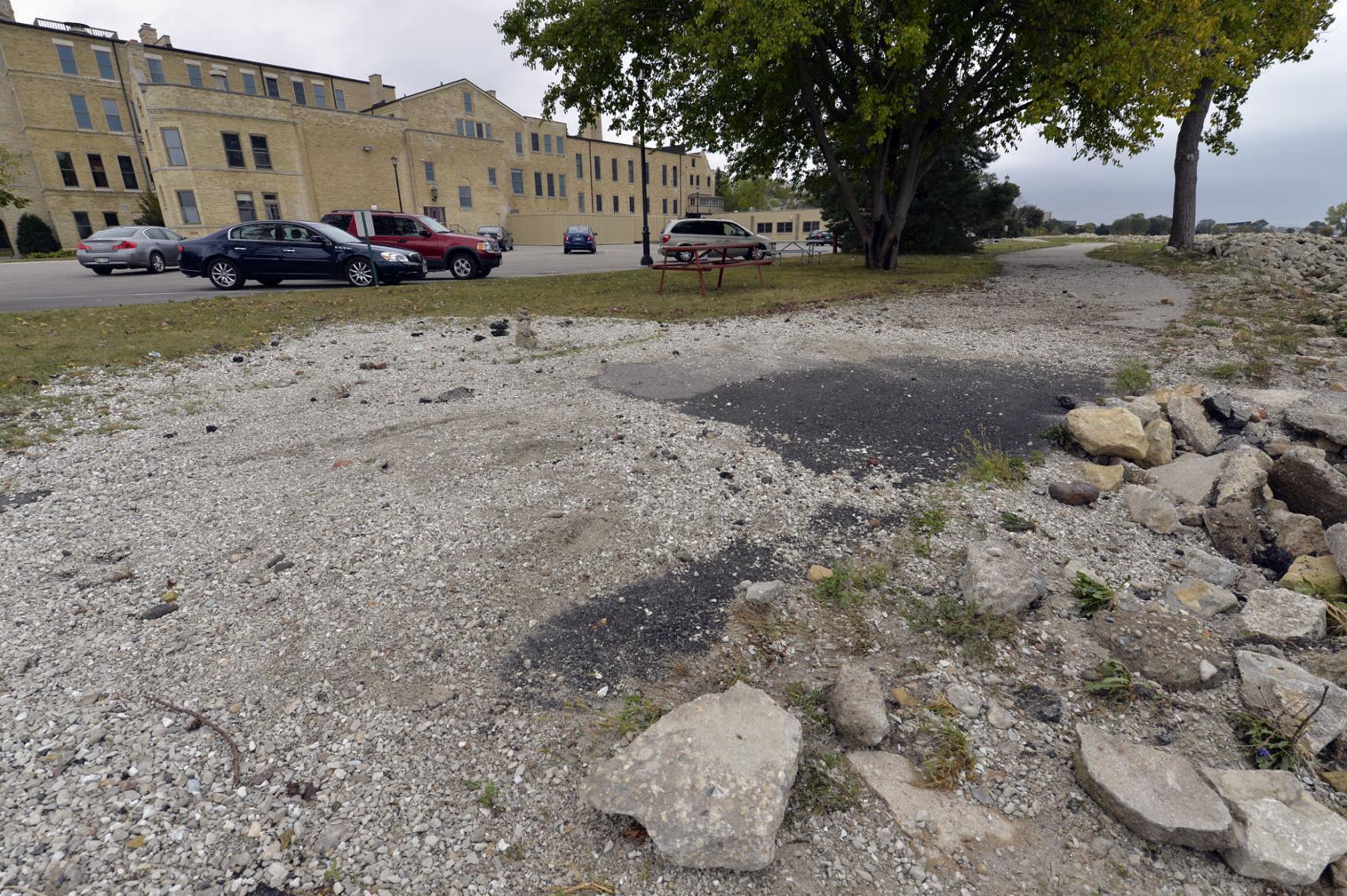Southeastern Wisconsin Coastal Resilience Grant Recipients
Proposals were sought in the fall of 2018 for projects to plan and prepare for enhanced community resilience to coastal hazards in Southeastern Wisconsin. Applicants identified coastal resilience needs in a community Coastal Resilience Self-Assessment and were encouraged to develop projects that would address these needs. The following projects were selected to receive funding and are underway. As projects are completed, case studies are being written to summarize major project outcomes and lessons learned.
See the press release about these grants here: CRG Press Release
Kemper Center Shoreline Protection Project (Phase III)
Kenosha County Division of Parks
The Kemper Center is a cultural and recreational facility along approximately 1,450 feet of exposed shoreline on Lake Michigan. A degraded stone revetment, bike path, and park grounds are continuously damaged during seasonal storm events due to fluctuating lake water levels and lack of shoreline protection. The county previously analyzed possible shoreline stabilization concepts for the park. This project advanced stormwater management and site grading plans in order to assess the current salvageable material at the Kemper Center shoreline site and further the regulatory coordination for the project.
Understanding Coastal Hazard Impacts through Parcel Mapping, Shoreline Classification, Public Outreach, and Local Ordinance Review
City of Racine Public Health Department (Project #1)
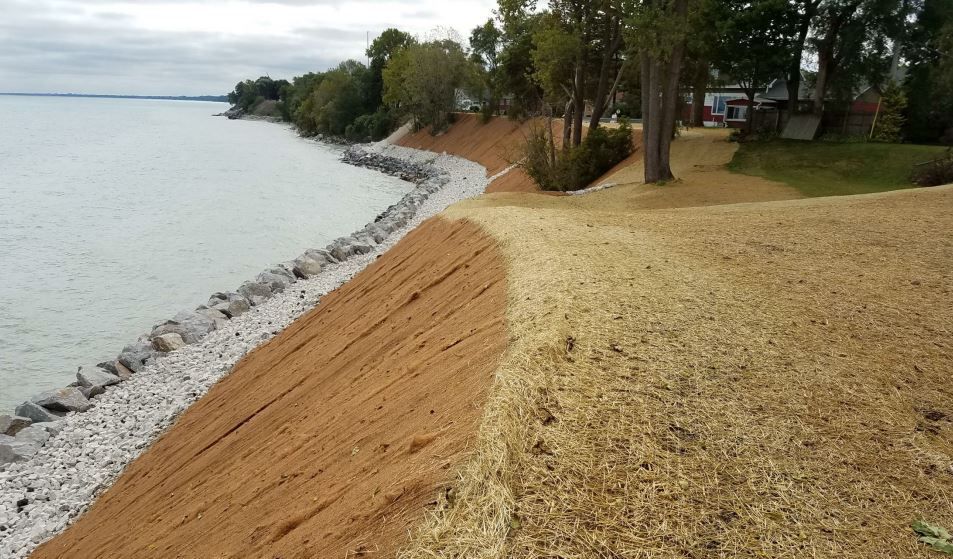
Erosion protection in the Village of Mount Pleasant
Photo retrieved from The Journal Times: “Racine to receive Coastal Management grant”
This project addressed the need to better understand coastal hazards threats, resources, and policies in Racine County. This project reviewed existing parcel maps to determine ownership of assets along the coast, compile regionally relevant coastal hazard education and outreach materials for shoreline property owners and conduct a review of ordinances for coastal Racine County jurisdictions to evaluate their currency and identify opportunities to better address coastal hazards. Products from these activities were distributed to Racine County’s municipalities to promote a better understanding of what actions are necessary to withstand, and proactively respond to, adverse coastal impacts.
Revise and/or Develop Beach Management Plans for WDNR Designated Public Beaches - Racine County
City of Racine Public Health Department (Project #2)

Parkway Beach, Racine County. Image Retrieved from City of Racine’s Public Health Department’s “Beach Health Assessment and Recommended Best Management Practices for Parkway Beach.”
This project assessed, revised, and developed beach best management practice plans for beaches in Racine County with a focus on incorporating elements that address coastal resiliency and extreme weather impacts on the beachscape. This project provided up-to-date information regarding site management practices to the Wisconsin Department of Natural Resources as well as the jurisdictions with local authority over these public bathing beaches.
Phase II Conceptual Design and Natural Area Management Plans - Greater North/Zoo Beach Area
City of Racine Public Health Department (Project #3)
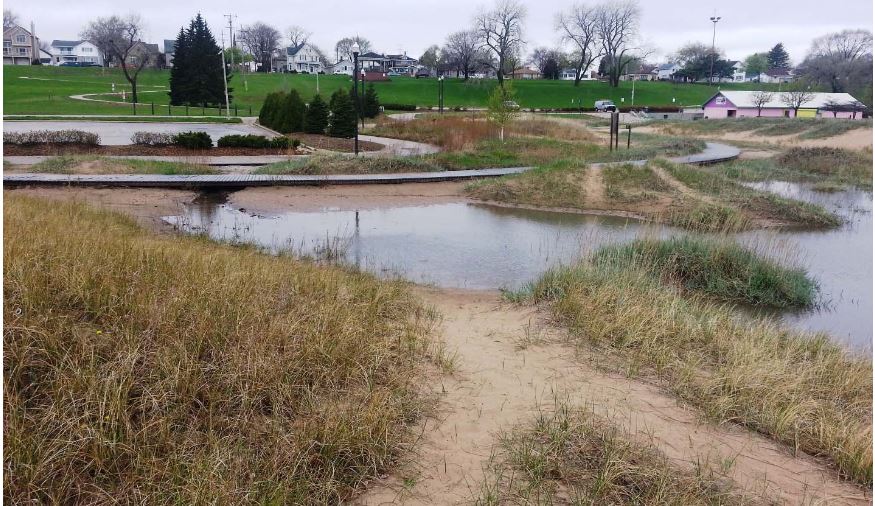
North Beach, Racine. Retrieved from: City of Racine Public Health Department.
This project developed conceptual design (North Beach) and natural area management plans (greater North/Zoo Beach area) in response to recommendations contained within the beach best management practice plan for the greater North/Zoo Beach area (from City of Racine Project #2 above).
Creating a Coastline Management Policy for Milwaukee County
Milwaukee County (Project #1)
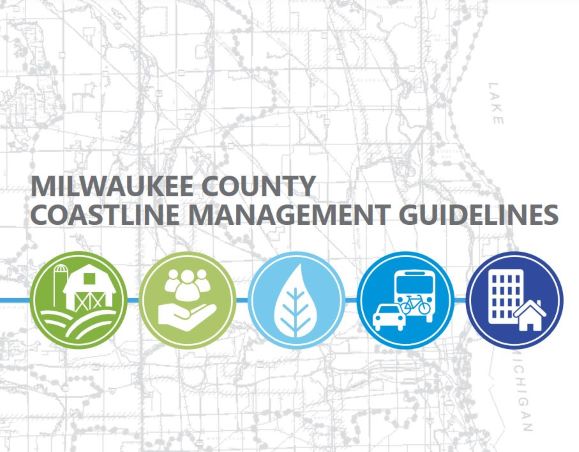
Cover of the Milwaukee County Coastal Management Guidelines. Prepared by SEWRPC.
This project developed a set of coastline management guidelines to be used by Milwaukee County staff to evaluate projects affecting County-owned assets with respect to coastline area impacts. To develop the guidelines, SEWRPC conducted an inventory of existing conditions, including natural resources and urban development along the Milwaukee County Lake Michigan coastline; a review of existing municipal, state, and federal coastline management guidelines and policies, and best management practices; and an examination of trends in the stability of the Lake Michigan bluffs within the County.
Milwaukee County Coastal Resources Inventory
Milwaukee County (Project #3)
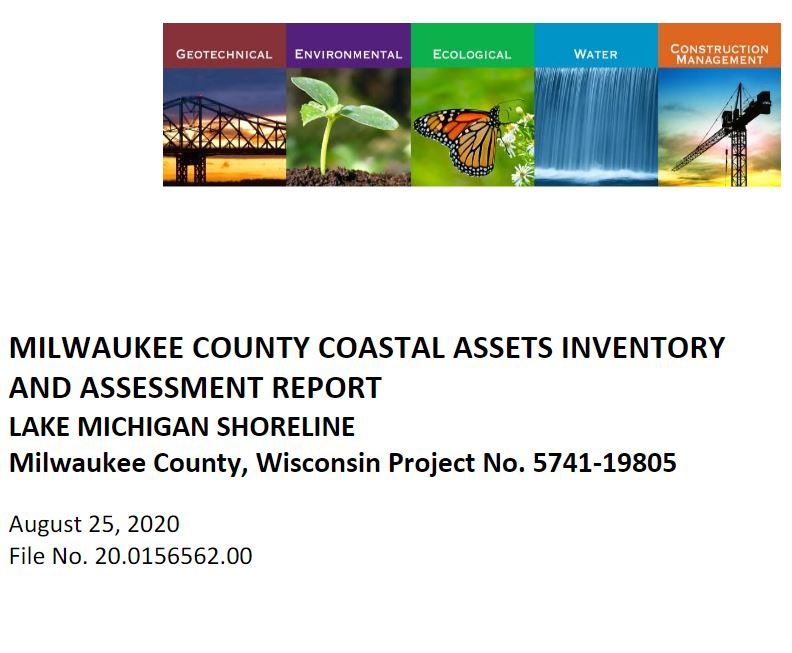
Cover of Milwaukee County Coastal Asset Inventory Report. Prepared by GZA GeoEnvironmental, Inc.
Milwaukee County has extensive holdings along the Lake Michigan coastline. These assets include infrastructure such as marinas, breakwaters, revetments, seawalls, boat launches, stormwater management features, roadways, and bridges, as well as natural features such as sand beaches, bluffs, and open parkland space. This project conducted a comprehensive study of these coastal assets to evaluate their vulnerability to extreme weather. The study inventoried Milwaukee County’s coastal resources, summarized their status, assigned values to those resources, and prioritized them according to vulnerability and value.
Oak Creek Shoreline Resilience, Habitat, and Access Project
City of Oak Creek
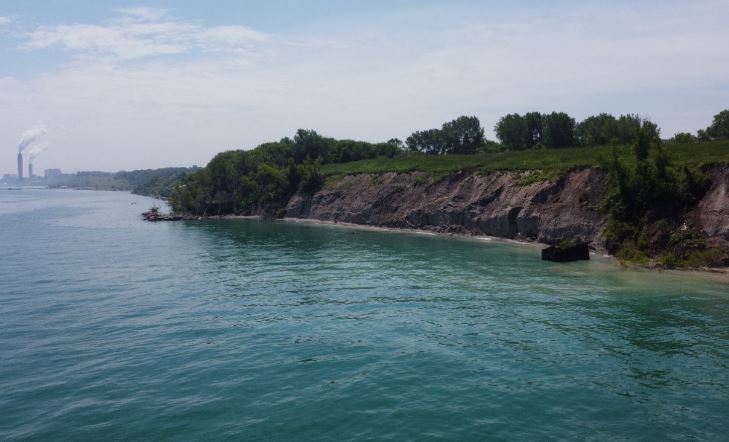
Oak Creek coastline. Photo credit: Edgewater Resources
This project created a detailed final design for bluff toe protection, bluff slope revegetation, and new public access at a brownfield site in Oak Creek. This project developed construction level design to create a resilient bluff that will become a public, city park. Further collaboration with the adjacent regional wastewater treatment plant will help reduce erosion at the City owned bluff and will address the treatment plant’s vulnerability to flanking recession at the property boundary.
Port of Milwaukee Coastal Facilities Inspection and Assessment for Coastal Resilience Hazards, Planning, & Sustainability
Port of Milwaukee
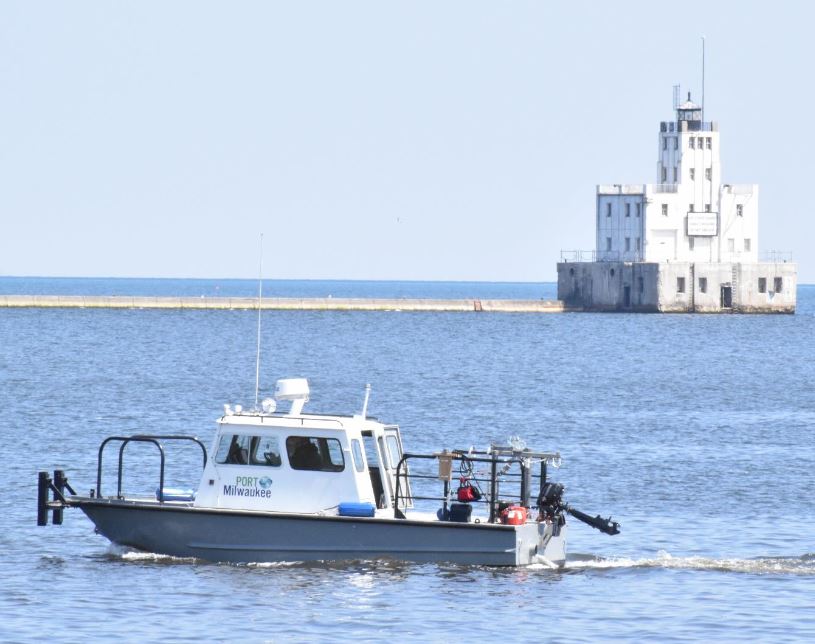
Port Milwaukee’s Survey Vessel, The MV Larry Sullivan. Photo Credit: Port of Milwaukee
This project inspected Port Milwaukee’s coastal structures, assessed their resilience, and planned mitigation measures for preventing future coastal hazard damage. The Port upgraded its existing harbor survey boat, adding a side scan sonar, an underwater camera, and an underwater drone. As part of the project, the Port’s facilities will be thoroughly inspected above and below water, including for scour by hydrographic survey. Generated inspection reports will summarize the inspection results, assessing vulnerabilities to coastal hazards and identifying strategic mitigation measures.
Clay Bluffs Cedar Gorge Nature Preserve Master Plan
Ozaukee County Planning and Parks Department (Project #1)
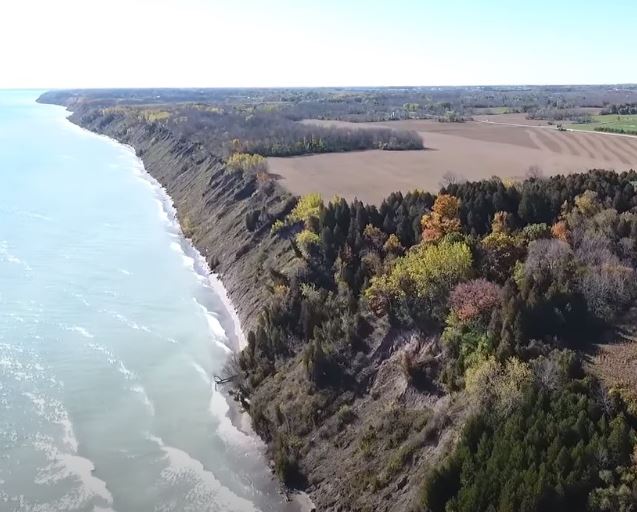
Aerial image of Clay Bluffs Cedar Gorge Nature Preserve. Photo Credit: Ozaukee County
This project developed a Master Plan for the Clay Bluffs Cedar Gorge Nature Preserve that considers coastal resiliency challenges to aid in the long-term management of the property. Elements of the Master Plan included ecological restoration, vegetation management for erosion control and invasive species management, passive-use, low impact recreation plans, shoreline and bluff erosion resiliency options, stormwater management, education and outreach, planned future improvements, and a funding plan to detail phasing and funding opportunities to implement the plan.
Virmond County Park Coastal Resiliency - Surface Water, Stormwater, and Groundwater Drainage
Ozaukee County Planning and Parks Department (Project #2)
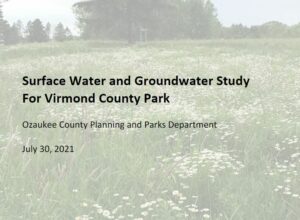
Report cover for surface water and groundwater report for Virmond Park. Photo credit: Stormwater Solutions
This project investigated the impact of surface water drainage and groundwater seepage on bluff erosion dynamics at Virmond County Park in the City of Mequon. The surface water and groundwater drainage study identified notable drainage points from existing or proposed infrastructure and onsite wetlands that may contribute to increased bluff erosion or slumping and stormwater drainage. This included preliminary engineering and design with proposed solutions for improved stormwater and groundwater management.
